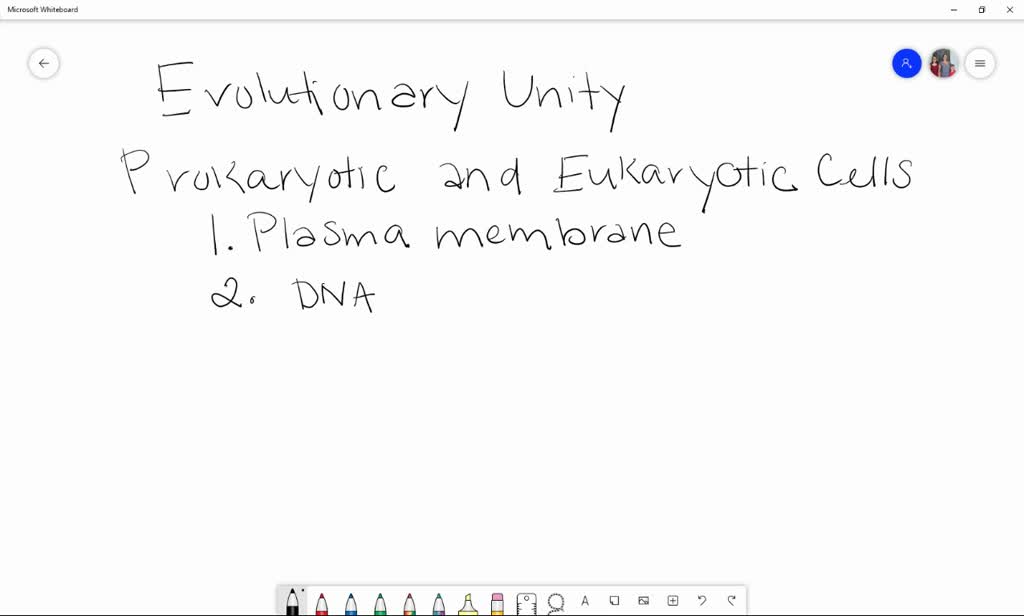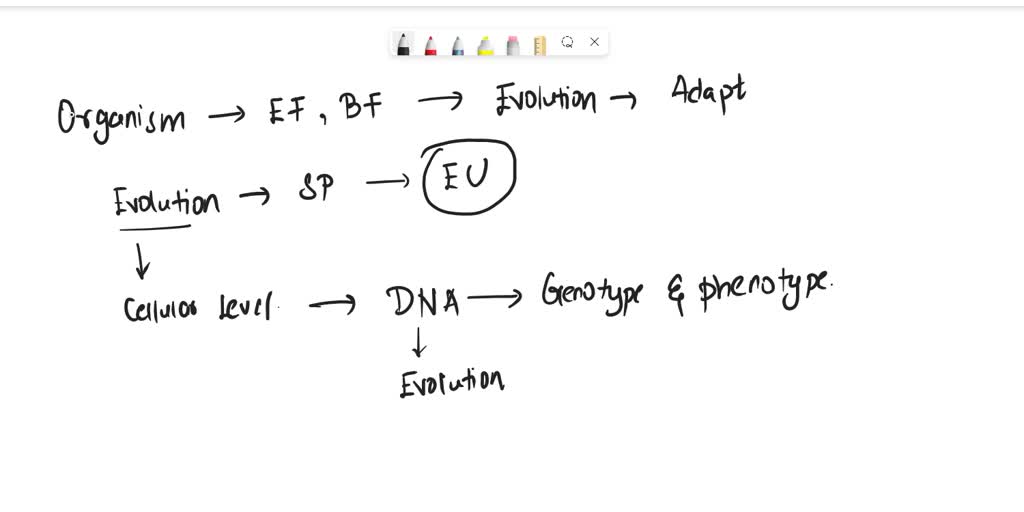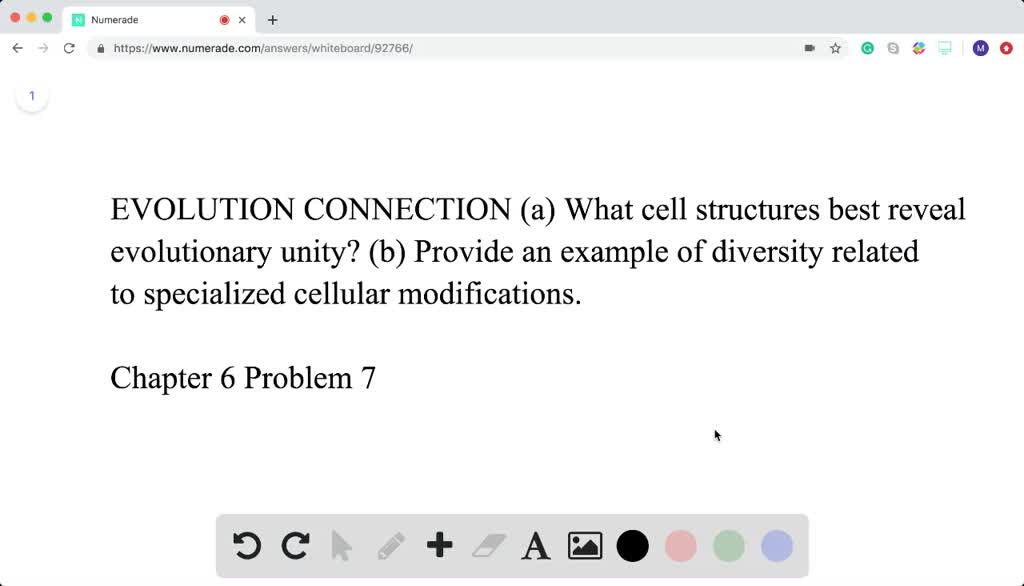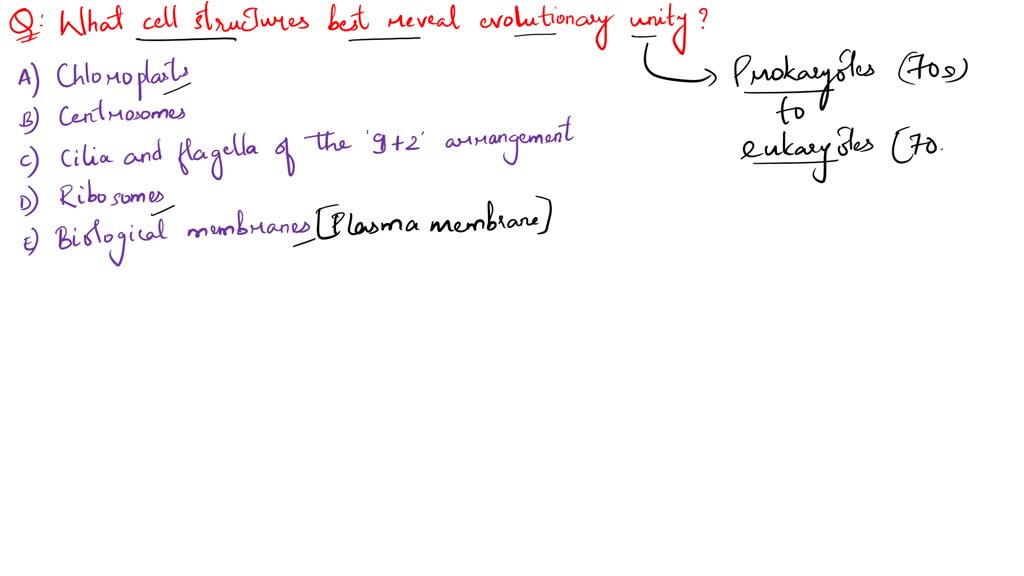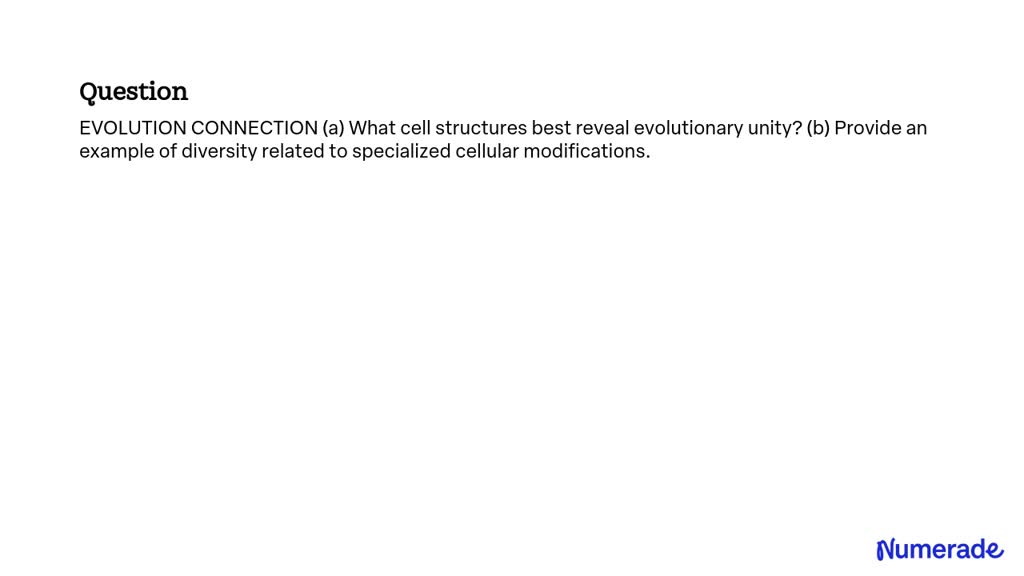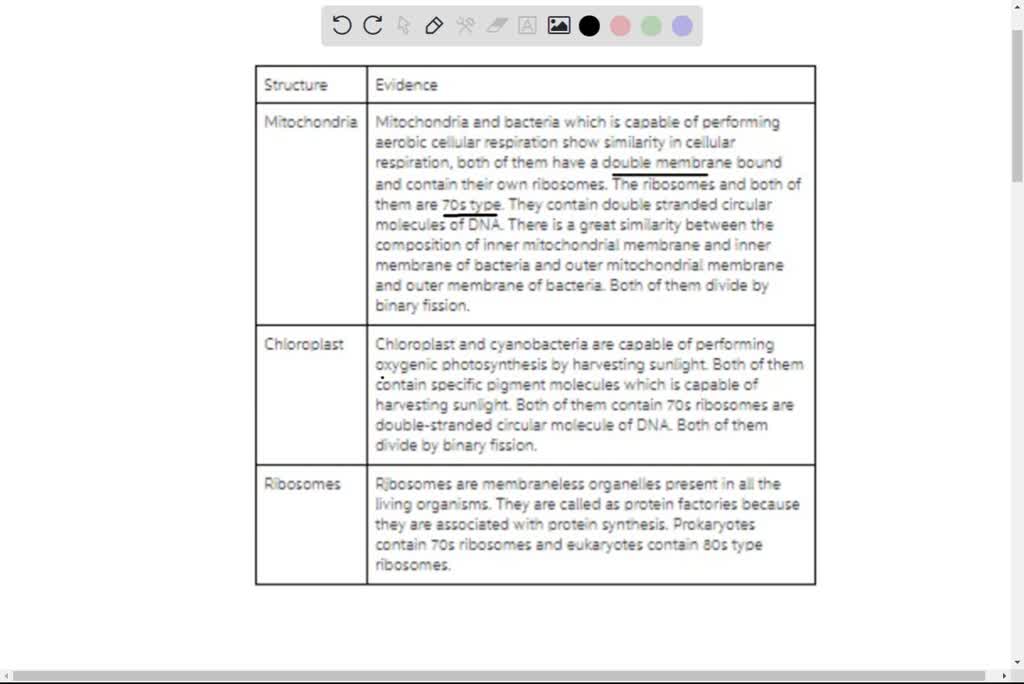What Cell Structures Best Reveal Evolutionary Unity
What Cell Structures Best Reveal Evolutionary Unity - All living specimens contain dna and both prokaryotes and eukaryotes contain plasma. Our shared cellular structures, nucleic acid, protein and metabolic chemistries (the ‘unity’ of life) supports our common ancestry with all life. What cell structures best reveal evolutionary unity? Key cell structures that reveal evolutionary unity include cilia and flagella, chloroplasts, biological membranes, and ribosomes. Dna and plasma membrane reveals evolutionary unity. When and where a cell’s or organism’s genetic. Dna contains the genetic instructions for the structure and function of cells and organisms. Ribosomes membrane proteins, which have diverse functions in a cell, are all polymers of the same.
When and where a cell’s or organism’s genetic. Dna contains the genetic instructions for the structure and function of cells and organisms. Dna and plasma membrane reveals evolutionary unity. Ribosomes membrane proteins, which have diverse functions in a cell, are all polymers of the same. Our shared cellular structures, nucleic acid, protein and metabolic chemistries (the ‘unity’ of life) supports our common ancestry with all life. What cell structures best reveal evolutionary unity? Key cell structures that reveal evolutionary unity include cilia and flagella, chloroplasts, biological membranes, and ribosomes. All living specimens contain dna and both prokaryotes and eukaryotes contain plasma.
Key cell structures that reveal evolutionary unity include cilia and flagella, chloroplasts, biological membranes, and ribosomes. Dna contains the genetic instructions for the structure and function of cells and organisms. All living specimens contain dna and both prokaryotes and eukaryotes contain plasma. What cell structures best reveal evolutionary unity? Dna and plasma membrane reveals evolutionary unity. Ribosomes membrane proteins, which have diverse functions in a cell, are all polymers of the same. Our shared cellular structures, nucleic acid, protein and metabolic chemistries (the ‘unity’ of life) supports our common ancestry with all life. When and where a cell’s or organism’s genetic.
Cell Structures Flashcards Memorang
When and where a cell’s or organism’s genetic. Key cell structures that reveal evolutionary unity include cilia and flagella, chloroplasts, biological membranes, and ribosomes. Dna contains the genetic instructions for the structure and function of cells and organisms. All living specimens contain dna and both prokaryotes and eukaryotes contain plasma. Ribosomes membrane proteins, which have diverse functions in a cell,.
SOLVED(a) What cell structures best reveal evolutionary unity? (b
All living specimens contain dna and both prokaryotes and eukaryotes contain plasma. Dna and plasma membrane reveals evolutionary unity. Ribosomes membrane proteins, which have diverse functions in a cell, are all polymers of the same. What cell structures best reveal evolutionary unity? Key cell structures that reveal evolutionary unity include cilia and flagella, chloroplasts, biological membranes, and ribosomes.
Animal Cell Structures Diagram Quizlet
Ribosomes membrane proteins, which have diverse functions in a cell, are all polymers of the same. All living specimens contain dna and both prokaryotes and eukaryotes contain plasma. When and where a cell’s or organism’s genetic. Our shared cellular structures, nucleic acid, protein and metabolic chemistries (the ‘unity’ of life) supports our common ancestry with all life. What cell structures.
SOLVED Which aspects of cell structure best reveal evolutionary unity
Ribosomes membrane proteins, which have diverse functions in a cell, are all polymers of the same. When and where a cell’s or organism’s genetic. What cell structures best reveal evolutionary unity? Our shared cellular structures, nucleic acid, protein and metabolic chemistries (the ‘unity’ of life) supports our common ancestry with all life. Dna and plasma membrane reveals evolutionary unity.
Cell Structures Match The Memory
Dna contains the genetic instructions for the structure and function of cells and organisms. Dna and plasma membrane reveals evolutionary unity. All living specimens contain dna and both prokaryotes and eukaryotes contain plasma. Ribosomes membrane proteins, which have diverse functions in a cell, are all polymers of the same. When and where a cell’s or organism’s genetic.
EVOLUTION CONNECTION (a) What cell structures best reveal evolutionary
All living specimens contain dna and both prokaryotes and eukaryotes contain plasma. What cell structures best reveal evolutionary unity? Dna contains the genetic instructions for the structure and function of cells and organisms. When and where a cell’s or organism’s genetic. Our shared cellular structures, nucleic acid, protein and metabolic chemistries (the ‘unity’ of life) supports our common ancestry with.
SOLVED EVOLUTION CONNECTION What cell structures best reveal
When and where a cell’s or organism’s genetic. What cell structures best reveal evolutionary unity? Dna and plasma membrane reveals evolutionary unity. Our shared cellular structures, nucleic acid, protein and metabolic chemistries (the ‘unity’ of life) supports our common ancestry with all life. Ribosomes membrane proteins, which have diverse functions in a cell, are all polymers of the same.
Solved EVOLUTION CONNECTIONWhat cell structures best reveal
Key cell structures that reveal evolutionary unity include cilia and flagella, chloroplasts, biological membranes, and ribosomes. Dna and plasma membrane reveals evolutionary unity. Dna contains the genetic instructions for the structure and function of cells and organisms. Ribosomes membrane proteins, which have diverse functions in a cell, are all polymers of the same. When and where a cell’s or organism’s.
SOLVED EVOLUTION CONNECTION (a) What cell structures best reveal
Ribosomes membrane proteins, which have diverse functions in a cell, are all polymers of the same. Key cell structures that reveal evolutionary unity include cilia and flagella, chloroplasts, biological membranes, and ribosomes. All living specimens contain dna and both prokaryotes and eukaryotes contain plasma. What cell structures best reveal evolutionary unity? Dna and plasma membrane reveals evolutionary unity.
SOLVED Identify three cell structures that best provide evidence for
Ribosomes membrane proteins, which have diverse functions in a cell, are all polymers of the same. When and where a cell’s or organism’s genetic. Our shared cellular structures, nucleic acid, protein and metabolic chemistries (the ‘unity’ of life) supports our common ancestry with all life. All living specimens contain dna and both prokaryotes and eukaryotes contain plasma. Dna contains the.
All Living Specimens Contain Dna And Both Prokaryotes And Eukaryotes Contain Plasma.
What cell structures best reveal evolutionary unity? Our shared cellular structures, nucleic acid, protein and metabolic chemistries (the ‘unity’ of life) supports our common ancestry with all life. When and where a cell’s or organism’s genetic. Ribosomes membrane proteins, which have diverse functions in a cell, are all polymers of the same.
Dna Contains The Genetic Instructions For The Structure And Function Of Cells And Organisms.
Dna and plasma membrane reveals evolutionary unity. Key cell structures that reveal evolutionary unity include cilia and flagella, chloroplasts, biological membranes, and ribosomes.

